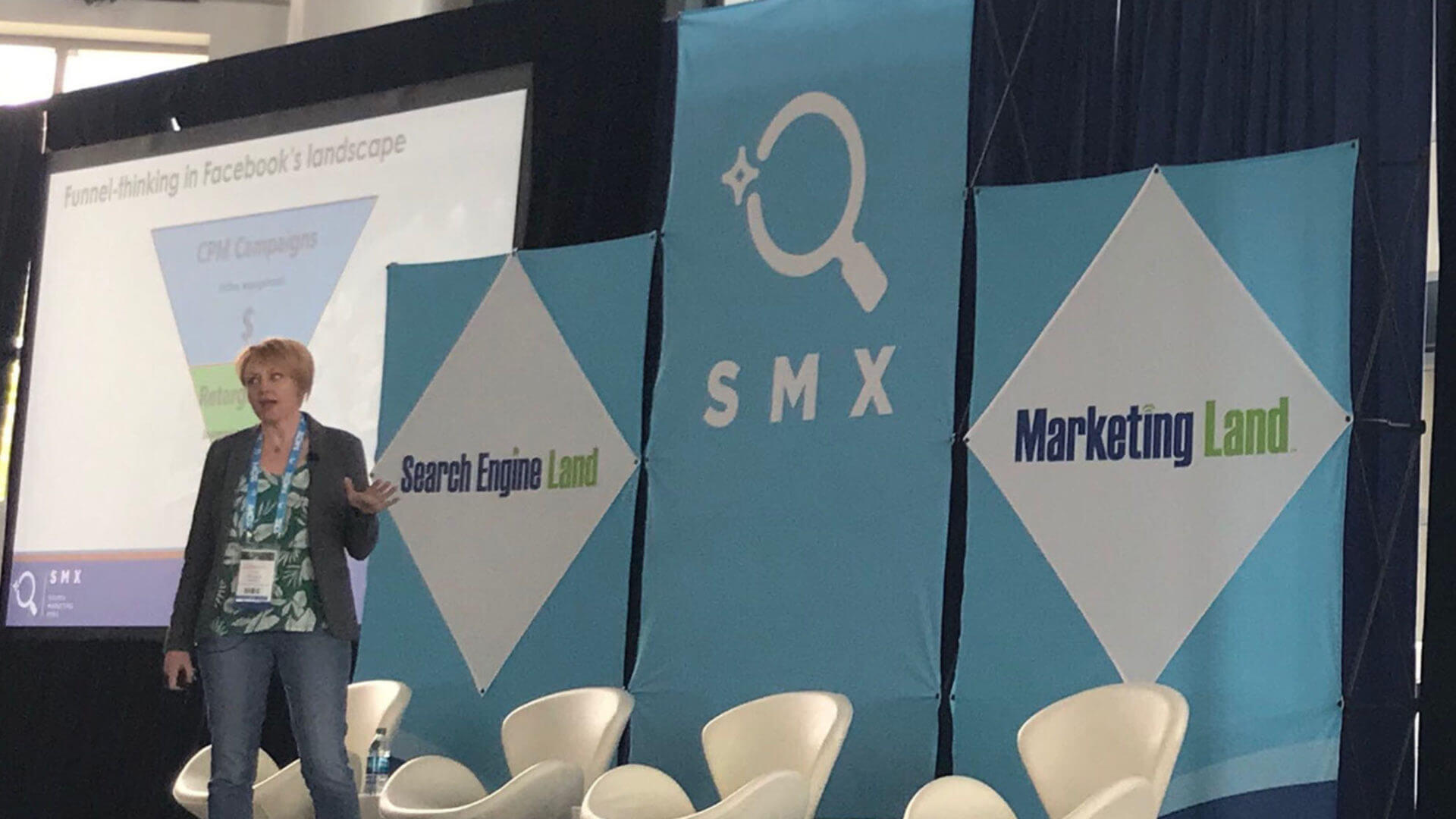Facebook ads aren’t what they used to be, so it’s time for smarter social ad buying
In a flooded social landscape, Susan Wenograd argues that the most successful brands will be the ones that integrate robust paid strategies and prioritize high-quality creative.
SEATTLE – Where Facebook ads were once a hotbed for Lookalike audiences and bottom-of-the-funnel conversion actions, it’s now a crowded space that enables ad blindness and brand apathy on a foundational level.
That’s the view of Susan Wenograd, VP of marketing strategy at Aimclear, who delivered a session on optimizing social ads at SMX Advanced last week.
What happened?
For starters, an oversaturation of ads served to the same users means that Lookalike audiences are no longer as effective as they once were. Add that to an over-reliance on conversion-focused campaigns and Facebook’s removal of third-party targeting, and you’ve got an ecosystem where brands are more fixated on lead counts than sustainable brand growth.
“Agencies that can’t strategize their way out of a paper bag will fail, as they should have long ago,” Wenograd said. In a flooded social landscape, the most successful brands will be the ones that integrate robust paid strategies and prioritize high-quality creative.
Shifting the campaign goal
If brands want to thrive in the next wave of social advertising, she added, then we (as marketers) need to return to our roots and examine conversion actions as only one piece of the larger picture. By shifting the initial campaign goal from CPA (conversions) to CPM (impressions), marketers can build a foundation for a more engaged, qualified audience pool with more efficient ad spend.
Once qualified leads begin engaging with a brand awareness campaign, advertisers can then use that rich data for retargeting. Building remarketing pools is a crucial component to converting leads, and a necessary undertaking for social advertisers planning to come out on top.
“Brands and agencies that can measure and understand triggers of brand lift will win the long game in expensive media arenas,” Wenograd said.
In going back-to-basics with engagement campaigns, brands should also be leveraging cross-channel data to maximize targeting opportunities. Implementing tagging structures and UTM parameters across all digital media can provide advertisers with streamlined access to tested segmentation data.
Creative at the center
But, of course, all this could mean nothing without compelling creative to back it up. Our rapidly evolving social footprint means that audiences expect high-quality visual assets, optimized to the format, screen, or platform they view it on. As Wenograd concluded in her session, “Brands and agencies that cannot execute and be nimble on creative will not survive in the Facebook and Instagram landscape.”
Contributing authors are invited to create content for Search Engine Land and are chosen for their expertise and contribution to the search community. Our contributors work under the oversight of the editorial staff and contributions are checked for quality and relevance to our readers. Search Engine Land is owned by Semrush. Contributor was not asked to make any direct or indirect mentions of Semrush. The opinions they express are their own.



